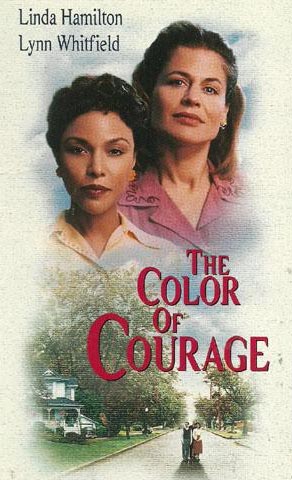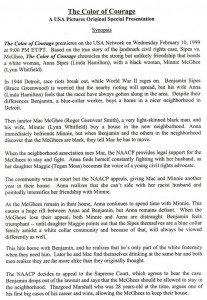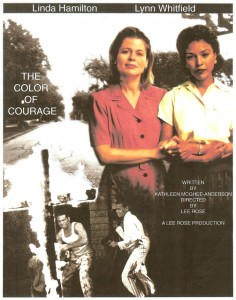
They Built a Home in Which All Could Live
Television: In ‘The Color of Courage,’ Kathleen McGhee Anderson shares a family story that’s really part of America’s story.
By Lynne Heffley, The Los Angeles Times
It was family lore when writer Kathleen McGhee Anderson was growing up: How, in the turbulent ’40s, her reserved grandparents, Orsel and Minnie McGhee, were sued and harassed for buying a home across the invisible segregation line in an all-white Detroit neighborhood. How they came to be represented by a young NAACP lawyer, Thurgood Marshall, and how their fight became a landmark U.S. Supreme Court civil rights case challenging restrictive housing covenants.
After the case was over and the McGhees’ right to live in their home had been upheld, they and the couple who had brought the suit against them, neighbors Benjamin and Anna Sipes, became lifelong friends.
It was that friendship–transcending fear, threats, anger and heartache–that inspired Anderson, the consulting producer for the critically acclaimed Lifetime series “Any Day Now” to write “The Color of Courage,” a USA Network movie premiering Wednesday.
Starring Lynn Whitfield as Minnie, Linda Hamilton as Anna, Roger Guenveur Smith as Orsel “Mac” McGhee and Bruce Greenwood as Benjamin Sipes, the film uses the McGhee’s public legal battle as backdrop for a more intimate story: Minnie and Anna’s unexpected journey to mutual respect.
“My grandparents were very quiet people, very soft-spoken,” Anderson said. “They never sought notice for their role in history. They just wanted to buy a house for themselves and their growing children.”
Anderson “grew up hearing about it at Sunday dinner at my grandparents” and was intrigued when she came to realize that despite “white flight that had pretty much turned the whole neighborhood into a black neighborhood, the couple who had brought the case against them lived there till the end of their lives.
“The human aspect, with the black and white couples who were able to transcend this vicious, bitter battle and become friends–that was the story I wanted to tell.”
It was Anna and Minnie, tending their gardens side by side, who first kindled that friendship.
“They had to be very careful,” Anderson said. They feared “showing any kind of connection, when there was such vitriol . . . for dramatic purposes, the film alludes to a more open friendship than was possible [early on] to make the point that a friendship evolved.”
For Whitfield (“Eve’s Bayou”), the biggest challenge “was getting into the head and the heart of this woman from the ’40s. She was so silent so much of the time and let her husband lead.”
For executive producer and first-time director, writer Lee Rose, this “was such a quiet story, and it was really told through the women’s eyes. My job was to show the dignity of these people and the fact that they did something so astonishing and courageous.”
Anderson still has the piece of paper that changed her grandparents’ lives: “It says ‘Benjamin J. Sipes and Anna Sipes, his wife, plaintiffs vs. Orsel McGhee and Minnie McGhee, defendants.’ ”
Mac McGhee, who endured the necessity of passing for white to be hired at a Detroit newspaper, might seem an unlikely civil rights hero. Born in Alabama to a white Irish doctor and a black woman, McGhee and his family lost their home when his father died, because the state did not recognize his parents’ marriage as valid.
“They were forced to move away from their land and the house my grandfather had grown up in,” Anderson said. “I believe he was determined never to have his home taken from him again.
Anderson, whose play “Oak and Ivy,” about the relationship between turn-of-the-century American poet Paul Laurence Dunbar and his wife, Alice, is currently at the Arena Stage in Washington, D.C., said she’s been criticized for being a “soft writer.”
“Now I celebrate that softness,” she said. “You have to change inside before you can change anything outside. I think the real courage is emotional courage. We’re different, and I celebrate our differences as people, but I believe that there is a commonality in our humanity. That’s what I strive to point out in my work. It’s what I embrace.”

